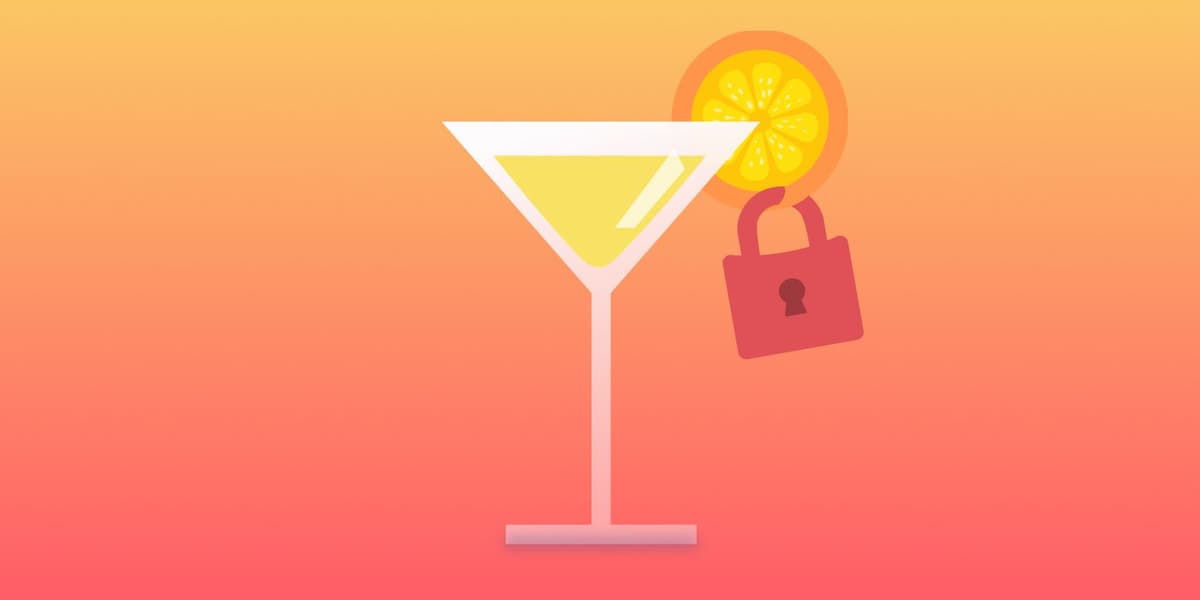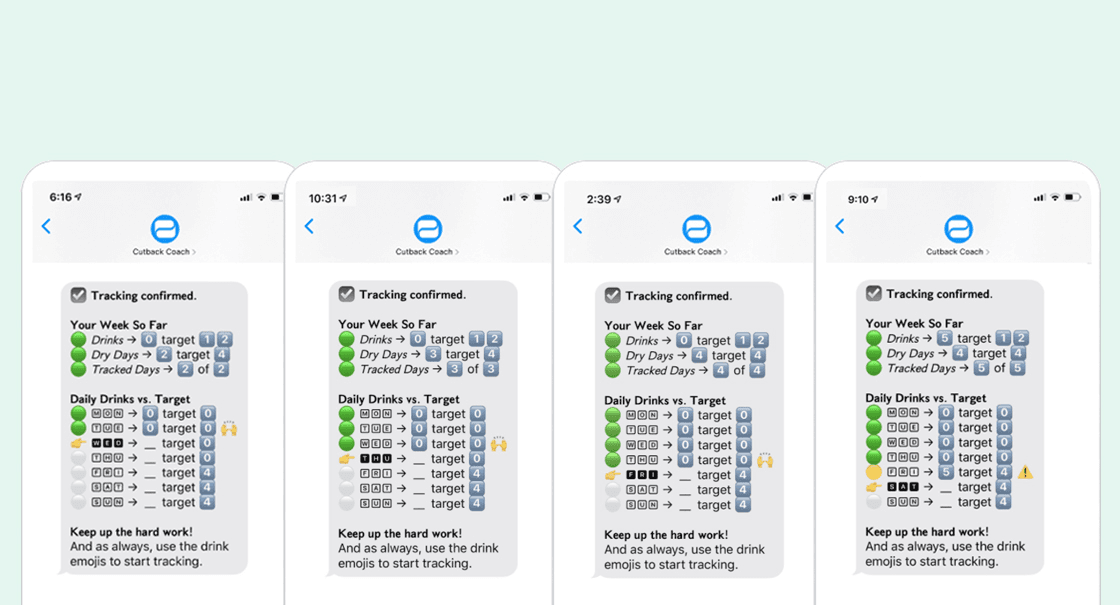How Sunnyside Helped Members Optimize Their Drinking Habits—and Saw 80%+ Daily Active Usage
Published on July 21, 2020/Last edited on July 21, 2020/7 min read


Nick Allen
Founder and CEO, SunnysideWe’re bringing you an exclusive, behind-the-scenes look at how forward-looking marketers and brands are leveraging Braze to drive brilliant, innovative customer experience. In this ongoing series, we’ll be spotlighting Nick Allen—the first lifecycle marketer at Lyft and former Director of Retention at IPSY—as he uses Braze to power communications for his latest startup, Sunnyside (formerly Cutback Coach.) Check out the first installment here.
This project focuses on leveraging two-way SMS messages to help anyone who regularly drinks alcohol build healthier habits around their drinking, and Nick will be sharing customer engagement strategies and technical insights gleaned from his journey. (Interested in seeing the experience for yourself? Braze users and Perspectives readers can skip the waitlist and sign up for the beta here.)
In recent years, apps have emerged that are designed to help us improve a wide range of health and wellness habits. We’ve learned to track everything from calories, steps, and workouts to sleep, meditation, anxiety levels, and mood, among many others. According to a 2019 Gallup poll, 1 in 5 US adults use at least one health app, and 92% identify usage of these apps as helpful or very helpful in improving their health.
Yet for every new app that catches on as part of our health routines, many more fail to engage us enough to have an impact on our ingrained behaviors. And, in some cases, the proliferation of apps and services demanding our attention can distract us from building momentum in connection with the changes we’d like to make. As our inboxes fill, our focus on making positive lifestyle changes tends to dwindle. To change an ingrained habit, we must start with the atomic building blocks of behavior change. For many frequent routines, this means building a new daily habit around tracking short-term progress towards a longer-term goal.
Building Intentionality, the Sunnyside Way
At Sunnyside, our focus is to help anyone who drinks alcohol—whether a little or kind of a lot—to build mindfulness and intentionality around when and how much they drink. For many, drinking in social situations and/or after a long day of work is an unconscious routine, so changing alcohol habits to optimize health benefits (like avoiding hangovers, sleeping better, and losing weight) requires building new routines to transform that unconscious routine into a conscious, intentional choice. We accomplish this with a system for planning and daily tracking, and our success hinges upon getting members to engage each and every day to track their progress.
For reasons we explored earlier, we believe SMS is the perfect channel for building daily habits, changing ingrained behaviors, and improving overall health. In this article, we’ll explore how we got started with SMS, as well as take a closer look at the specific philosophies and strategies we’ve employed that have helped us achieve more than 80% daily tracking engagement among active members seeking to optimize their drinking.
How we put SMS at the center of our business—and you can too!

In the early days of ideating, planning and interviewing prospective customers for Sunnyside, it became clear that most of our target audience was hesitant to add another app to their already crowded home screens. Many were already tracking some existing habits, and noted that remembering to actually open the app and log each day—despite frequent emails and push notifications—was the biggest barrier to forming a positive habit.
We thought long and hard about this challenge, and how to build something lightweight enough to fit into our target customers’ existing routines. Having spent more than 10 years working on building engagement through lifecycle channels—including 4.5 years at Lyft, where SMS was used heavily to activate and engage our drivers—SMS seemed like the perfect fit for our business needs.
So for us, the answer of whether or not SMS was right for our business was a pretty obvious one. From our perspective, SMS was:
- Core to the user experience: We viewed SMS as our primary product experience, instead of another marketing channel to add to our mix. Because of the two-way nature of SMS, we were able to build out a rich experience for our customers entirely within the messaging channel, removing the need for another app to clutter their home screen.
- Key to driving recurring frequency: We had a use case that hinged upon daily engagement, so we needed to build the lowest possible friction path to usage. That meant using the Braze Canvas customer journey feature to create cohesive messaging flows triggered by relevant user actions (like logging a drink) to keep our outreach relevant.
- Uniquely personalized: Our model hinged on collecting data on user progress, and helping our members see this data in novel ways. This meant that each message we send could be individualized, contextual and relevant for the recipient, accurately reflecting both their drinking patterns and their engagement with our brand.
- A path to meeting our customers where they are: We wanted to establish a personal relationship with every customer, and to create an experience that felt like engaging with a person instead of just using another app. Texting us feels just like texting a friend.
The channel was a great fit for us, but it’s clearly not the right fit for every business. For those just starting out in exploring the channels, here are a few questions I’d ask from the outset:
- Can SMS add value to the core product experience? The opportunity in SMS is not an extension of your brand’s batch and blast email or push strategy, but rather an opportunity to supplement the core experience of your product or service. If you don’t have a use case that you feel truly adds value beyond just getting more eyes on your promo or sale, it’s probably not the channel for you.
- Do you have messages that need to reach your customers in real time? Great examples include flight delay reminders and shipping updates. Your customers need to know this information as soon as it happens, so SMS is likely a better bet than email or push because of its superior open rates.
- Can you individualize the experience? As soon as you think about sending the same message to your entire audience, you’re in trouble. Focus on key moments in the lifecycle of an individual customer where you can add value by extending your channel mix. If you can’t find one you feel extremely good about, don’t force it.
There are many more questions to answer, but these are a good starting place for companies looking to open the channel to their customers.
Early Results That Speak for Themselves
By being intentional about the core role SMS plays in our business, and defining frameworks for deep, two-way personalization and human support, we’ve been able to achieve daily active usage—defined as days tracked / total active days—of 80%+ among our active beta cohort. While this group is still relatively new to the product and we do expect some drop-off due to the novelty effect over time, we’re confident that with the strategies outlined above we can keep engagement levels far above the industry average for comparable services. With the right strategy, SMS can be a channel that fundamentally changes your business, too.
I’ll be digging into exactly how we achieved these results in my next post. But in the meantime, if you’re interested in seeing what all this looks like for yourself, I invite you to build healthier drinking habits by checking out Sunnyside.
Related Content
View the Blog
How AI Decisioning Transforms Marketing (A Complete Guide)

Team Braze

AI decisioning cheat sheet: How to crawl/walk/run with BrazeAI Decisioning Studioᵀᴹ

Team Braze

A day in the life of a data scientist on the BrazeAIᵀᴹ forward-deployed engineering team
